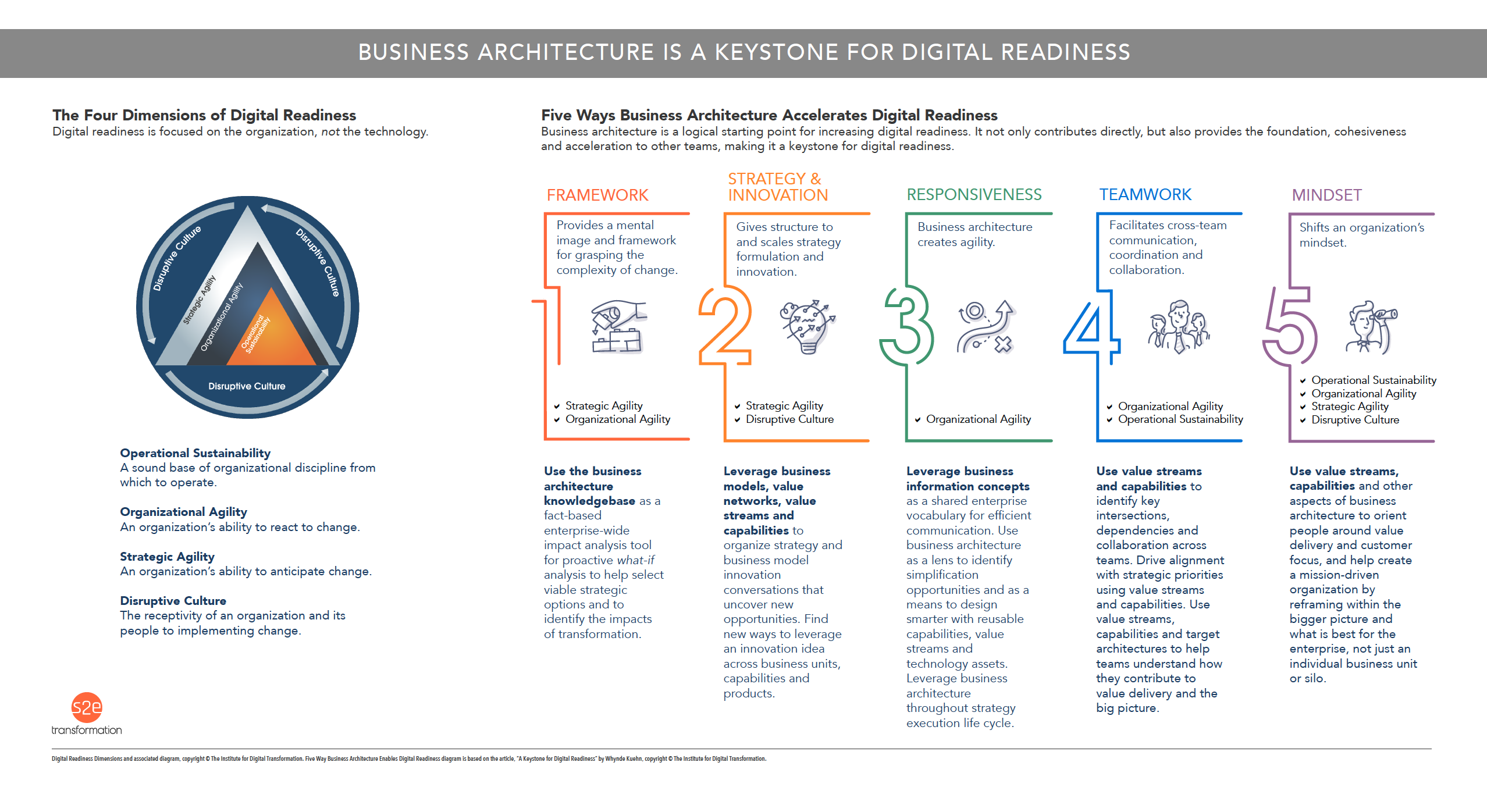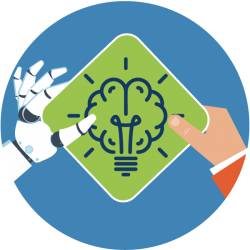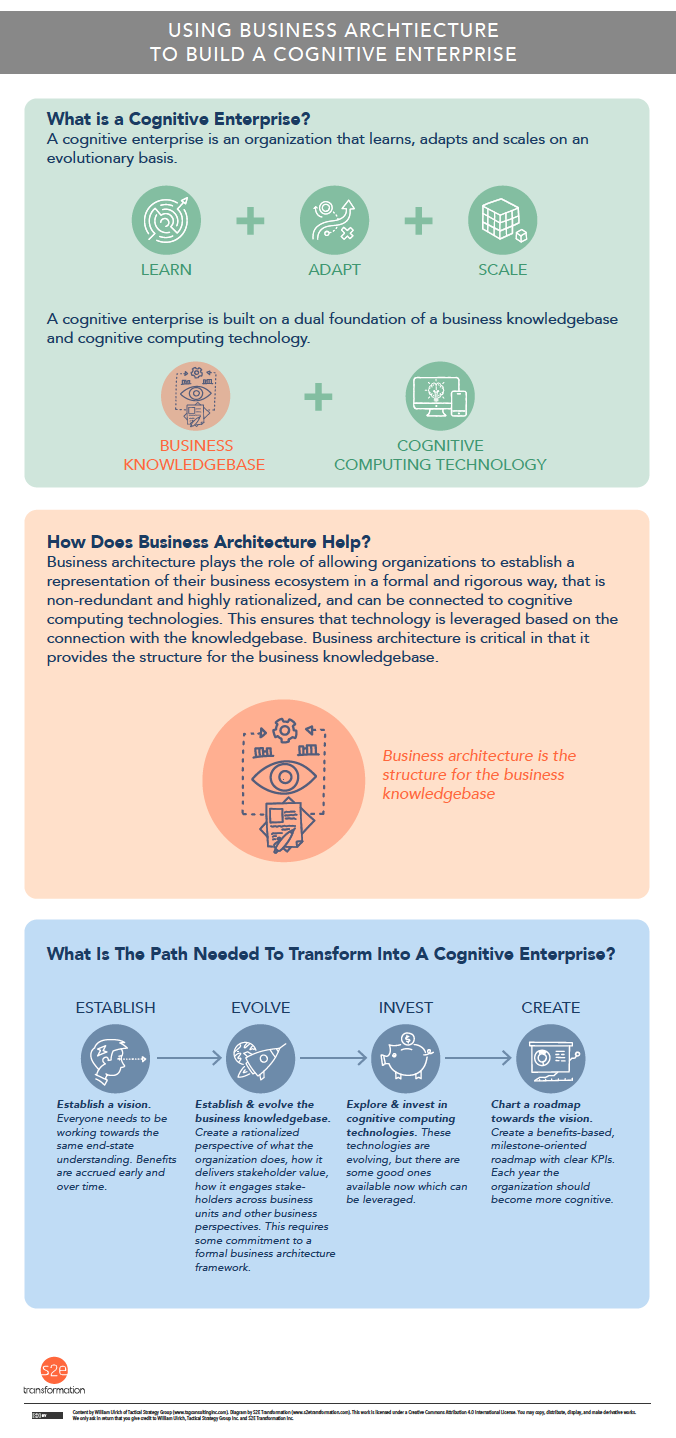
Digital transformation. Digital strategy. Digital economy. Digital technology. Everything digital. But what does it really mean and how do we get ready for such a thing? Can we ever be ready?
This installment of StraightTalk explores the topic of digital readiness: what it is, how we measure it, how we get there – and how business architecture can accelerate that journey. We had the honor of interviewing guest star, Dr. Frank Granito, one of the Managing Partners and Chief Scientist at the Institute for Digital Transformation, who clearly outlines what digital readiness really means and how business architecture can help. This post is based on our recent interview with him as well as a recent article, The Keystone for Digital Readiness.
Disclaimer: we’ve made some tiny adjustments for our typical StraightTalk-style: the gray headings represent StraightTalk asking the questions and our guest, Frank, responds in turn.
Do not miss the full StraightTalk podcast 15-Minutes With Dr. Frank Granito: Digital Readiness and How Business Architecture Can Accelerate Preparedness. It’s a must-listen as this StraightTalk installment has been intentionally adapted and abbreviated.
First things first. What is digital transformation?
Frank: The hype cycle around this is absolutely enormous. If you ask 10 people, you may get 11 different answers. So, let me tell you how we define it at the Institute.
Digital transformation is the process of becoming a digital enterprise. A digital enterprise is one in which digital technology is at the center of how the organization operates, produces products and services (even if they are non-digital), generates revenue, seizes competitive advantage, and produces value.
Digital transformation is not about simply implementing a digital technology or process, like cloud or agile. A digital enterprise is also about the way people interact with and leverage technology to engage with their customers, employees and partners. Thus, a digital enterprise is also defined by its culture and the attitudes, values and beliefs of its people.
Got it. What then is digital readiness?
Frank: This is a concept that a lot of organizations forget or avoid. Think about it this way: a military unit doesn’t go into battle without proper training. More simply, a professional sports team doesn’t just assemble and play the game. There’s preparation. There’s practice. There are team building and comradery. In fact, the motto of the United States Coast Guard is Semper Paratus, which is Latin for Always Ready. Their doctrine is “The Service has built its reputation on being ‘Always Ready’ to meet any maritime challenge by successfully and repeatedly adapting to the situation at hand.” I found it incredibly profound that they talk about the ability to adapt and that’s about being ready, and that’s about being a digital enterprise – being able to continually adapt to the digital environment. So why would you approach a transformation effort without the same mindset of readiness?
Digital readiness is about having the right processes, agility and culture to compete and continually adapt in the lightning-quick digital economy. Digital readiness actually focuses on the organization, not the technology.
How does an organization measure its digital readiness?
Frank: Those organizations that are successfully making this digital transformation transition are doing so by developing four specific cultural capabilities that we call the Digital Enterprise Readiness Framework.
First, we look at Operational Sustainability, and that asks the rhetorical question: Does your organization have a stable base to operate from? Unlike typical maturity assessments, we are looking for just enough process to get the job done as opposed to shooting for a number like CMMI Level 4.
Next is Organizational Agility: How quickly can your organization react to change in the environment? There should be just enough organizational communication and evidence-based decision making to pivot when needed.
Third, we measure Strategic Agility: How well does your organization anticipate change? Organizational Agility is adapting to change while Strategic Agility is anticipating change. Organizations should have proper internal and external scanning in place to recognize when things could change and then get out in front of it – or even create it.
And finally, we talk about a Disruptive Culture that surrounds the other three: How receptive is your organization and its people to implementing change? There should be collaboration, agile values like taking reasonable risk or embracing failure as a learning exercise. This is the disruptive culture of an organization that is a digital enterprise. There also needs to be a certain amount of vulnerability, or the ability to hold yourself up to a certain amount of what I call scorn and ridicule and for your colleagues and leaders to give constructive criticism.
How would you characterize the state of digital readiness across organizations globally?
Frank: That’s a really great question because we really do not have scientific data to back it up. We have some ancillary data, but in my opinion, I would say not so well. There’s a good deal of information collected by others, and for example, both Gartner and McKinsey report a high transformation failure rate. While that doesn’t seem directly correlated to readiness, that same McKinsey study reports that culture is the most significant self-reported barrier to digital effectiveness. McKinsey also reports that cultural obstacles are preventing transformation and they clearly relate with negative economic performance. So, we can make a bit of a hypothesis that culture and readiness go together, and that lack of good culture is preventing successful transformations. And, since readiness is based on cultural factors across all four dimensions of our readiness framework, we can hypothesize that readiness is clearly a factor.
So, how can business architecture help an organization to achieve digital readiness?
Frank: Here’s the $64,000 question. We say that being digital ready starts at the operational level – having just enough process to do the job and having a sound base of organizational discipline. The first foundational characteristic of digital readiness is a stable and sustainable business process and technology operational model. So now we get into the business architecture side of this. If an organization’s business processes and technology operations are not running in an efficient and sustainable manner, there is a limited likelihood that they will successfully endure a transformational effort.
So, business architecture then is a keystone for digital readiness. It is a business framework and discipline that not only contributes its own unique value, but it enables many of the other enablers. From a business architecture standpoint, it is a feeder or an enabler to the organizational discipline which is the foundation of digital readiness. This makes business architecture a logical starting point for increasing an organization’s digital readiness. It provides the foundation that accelerates and locks together all of the other teams, disciplines and approaches.
P.S. If you’re new to business architecture, StraightTalk has you covered. Start with Posts No. 1 (what) and No. 2 (why).
Exactly how does business architecture do that?
StraightTalk: At a high level, here are a few specific ways in which an organization that leverages business architecture can increase its digital readiness, across the four digital readiness dimensions.
- Business architecture provides a mental image and framework for grasping the complexity of change. For example, use the business architecture knowledgebase as a fact-based, enterprise-wide impact analysis tool for proactive what-if analysis to help select viable strategic options and to identify the impacts of transformation.
- Business architecture gives structure to and scales strategy formulation and innovation. For example, leverage business models, value networks, value streams and capabilities to organize strategy and business model innovation conversations that uncover new opportunities. Also find new ways to leverage an innovation idea across business units, capabilities and products.
- Business architecture creates agility. For example, leverage business information concepts as a shared enterprise vocabulary for simpler and clearer communication. Use business architecture as a business lens to identify simplification opportunities (e.g. redundant technology) as well as design smarter in the future with reusable capabilities, value streams and technology assets. Leverage business architecture throughout the strategy execution life cycle to create end-to-end organizational agility. (More on that here in Post No. 3 and No. 50.)
- Business architecture facilitates cross-team communication, coordination and collaboration. Super important in our agile world, right? Use value streams and capabilities to identify key intersections, dependencies and collaboration points across teams so they can work autonomously and design together where applicable. Drive alignment with strategic priorities (e.g. continuous improvement, investments, etc.) using value streams and capabilities which reflect ties to strategies and objectives as well as effectiveness metrics. Use value streams, capabilities and target architectures to help people understand how they contribute to value delivery and the big picture.
- Business architecture shifts an organization’s mindset. Use value streams, capabilities and other aspects of business architecture to orient people around value delivery and customer focus, and help create a mission-driven organization by reframing within the bigger picture and what is best for the enterprise, not just an individual business unit or silo.
Check out the handy diagram below for a summary of this.

How does an organization increase its digital readiness? Where should they start?
Frank: Two things: Be wary of vendors who will try to sell you on a technology as a digital transformation solution. At the Institute we stress that digital transformation is not about mere technology, but rather technology as an enabler of business and cultural transformation.
And second is your culture. Just like Pavlov, you get what you reward. So, senior leadership should exhibit and reward the behavior they want from their teams. If a leader comes in late, so will others. If a leader does not take digital transformation seriously, neither will others. Leaders should empathize with their staff, sweat with their staff, and listen to their staff because they are the ultimate resource.
So, in closing, as we’ve learned from Dr. Granito, our organizations still have a ways to go to get where they need to be to successfully compete and continually adapt in the digital economy. This also means that as business architects, we are called to action to help our organizations become digital ready. Business architecture is the starting point, the enabler to the organizational discipline which is the foundation of digital readiness – the keystone for digital readiness. Positioning business architecture as an enabler for digital readiness is yet another way we can demonstrate and advocate for the value of this powerful discipline.
More Good Stuff…
15-Minutes With Dr. Frank Granito: Digital Readiness and How Business Architecture Can Accelerate Preparedness (StraightTalk podcast): Just in case you missed the link in the beginning, here it is again. Do not miss the podcast with Dr. Granito on digital readiness, which was the basis for this post. It’s pure gold.
What is a Digital Enterprise? (Dr. Frank Granito): An Institute article by our guest star which introduces the digital readiness dimensions.
Assessing Readiness to be a Digital Enterprise – Part One, Part Two, Part Three and Part Four (Dr. Frank Granito): Four must-read Institute articles by our Guest Star on each of the digital readiness dimensions.
A Keystone for Digital Readiness (Whynde Kuehn): An Institute article that expands on the topic of how business architecture enables digital readiness, which was also a basis for this post.
The Institute for Digital Transformation: A wealth of knowledge and resources on digital transformation and readiness, including articles, training, assessments and more. Dr. Granito has also generously offered to continue the conversation with anyone who is interested in learning more. (Make sure to listen to his podcast first.) You may reach him via our contact page (please mention “Digital Readiness – Dr. Granito” in the body of your message) or schedule an appointment.
Digital Transformation Is Not About the Technology (HBR): Digital technology provides possibilities, but if people lack the right mindset to change and the current organizational practices are flawed, digital transformation will simply magnify those flows. This article outlines five lessons from digital transformations that have succeeded.
Digital Leadership vs Digital Transformation (TED Talk): A TED talk by Nelson Phillips on what kind of leaders we need as our organizations are transformed, as our economies transform and as we as individuals are transformed.


